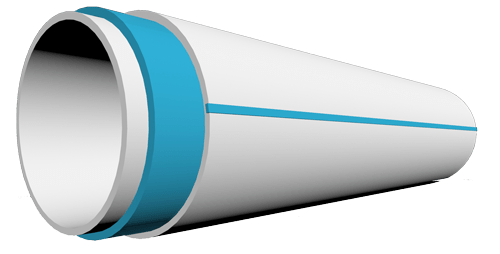Three-layer polyethylene pipe

After the discovery of polyethylene in 1933, it became one of the most widely used thermoplastics in the world. During World War II, this material was mostly used as electrical insulation, but today, three-layer polyethylene pipe has become an engineered polymer and it is used in cases such as the production of water and gas transmission pipes.

If we go back to the past, for the first time in 1950, polyethylene was used in the pipe industry. In North America, polyethylene pipes were first used to transfer water, and due to their advantages such as flexibility, anti-corrosion, strength and light, have been considered by many scientists and consumers, and with further research and studies. , This material has evolved and progressed day by day. The success of these pipes in water supply led to their use in the gas supply industry. Sources indicate that nearly 95% of all new pipes in the North American gas industry are polyethylene pipes. The trend of this development includes a great change in both raw materials and production technology of this type of pipes. Polyethylene types were produced and used in three generations.
With the arrival of the second generation of materials including PE80 and PE100, these materials entered the gas pipeline industry. With the continuation of research and development in 1990, the third generation of PE100 polyethylene materials entered the market and caused 100% customer satisfaction. Despite the satisfaction of these pipes, the technology of polyethylene pipes continued to challenge itself and did not stop developing until PE125 was introduced.
Along with the changes in the raw materials of polyethylene pipes, the production technology also changed. As in the life of the product, the pipes are produced from 16 mm to 1200 mm in size and the inner layer of white material (food grade).

Continued improvement in the design of the pipes led to the production of corrugated pipes and the possibility of using these pipes at greater depths and more flexibility. By optimizing many parameters affecting the production process, including designing newer and more efficient molds, adding hardware and control software in the production line, inventing new and suitable technologies for welding pipes, using composite pipe technology to In order to combine and use the properties of each layer and produce multilayer pipes, a great change was made in the polyethylene pipe industry.
In the production of three-layer polyethylene pipes, Petro Ab Hayat Kala Company has many advantages, which are briefly mentioned in a few cases of their three-layer polyethylene pipes:
A: Increase mechanical properties and creep strength
The carbon block masses formed in polyethylene give rise to microcracks, and these microcracks potentially have the ability to shrink and form larger cracks. In this way, failure is achieved by the accumulation of microcracks. The presence of carbon block in the structure of polyethylene causes failure in two ways: on the one hand by starting to leave more easily due to stress concentration on the filler and on the other hand by reducing chain mobility due to polymer-filler interactions.
B: Improve weldability and weld strength
Therefore, since the middle layer (without additives) in the welding of polyethylene pipes is involved in the welding surface, very high weldability is one of the properties of the company’s three-layer pipes.
C: Hygiene and non-proliferation of fungi and microorganisms inside the tube
The inner layer of the white three-layer tube contains titanium dioxide masterbatch.
Titanium dioxide has many benefits, including:
- Sunscreen
- Water purification and purification
- Ability to remove possible taste and odor in water
- Prevent the accumulation of germs and microorganisms
- Properties of hydrophilicity and self-cleaning
